
April 2019 marks the 25th anniversary of the 1994 Rwandan genocide, a horrific tragedy that took place in 1994 during the Rwanda Civil War. Years have passed; Rwanda has made much progress. Now the country is held as one of the best places to do business in Africa by the World Bank and tourism once again plays a key role in its economy.
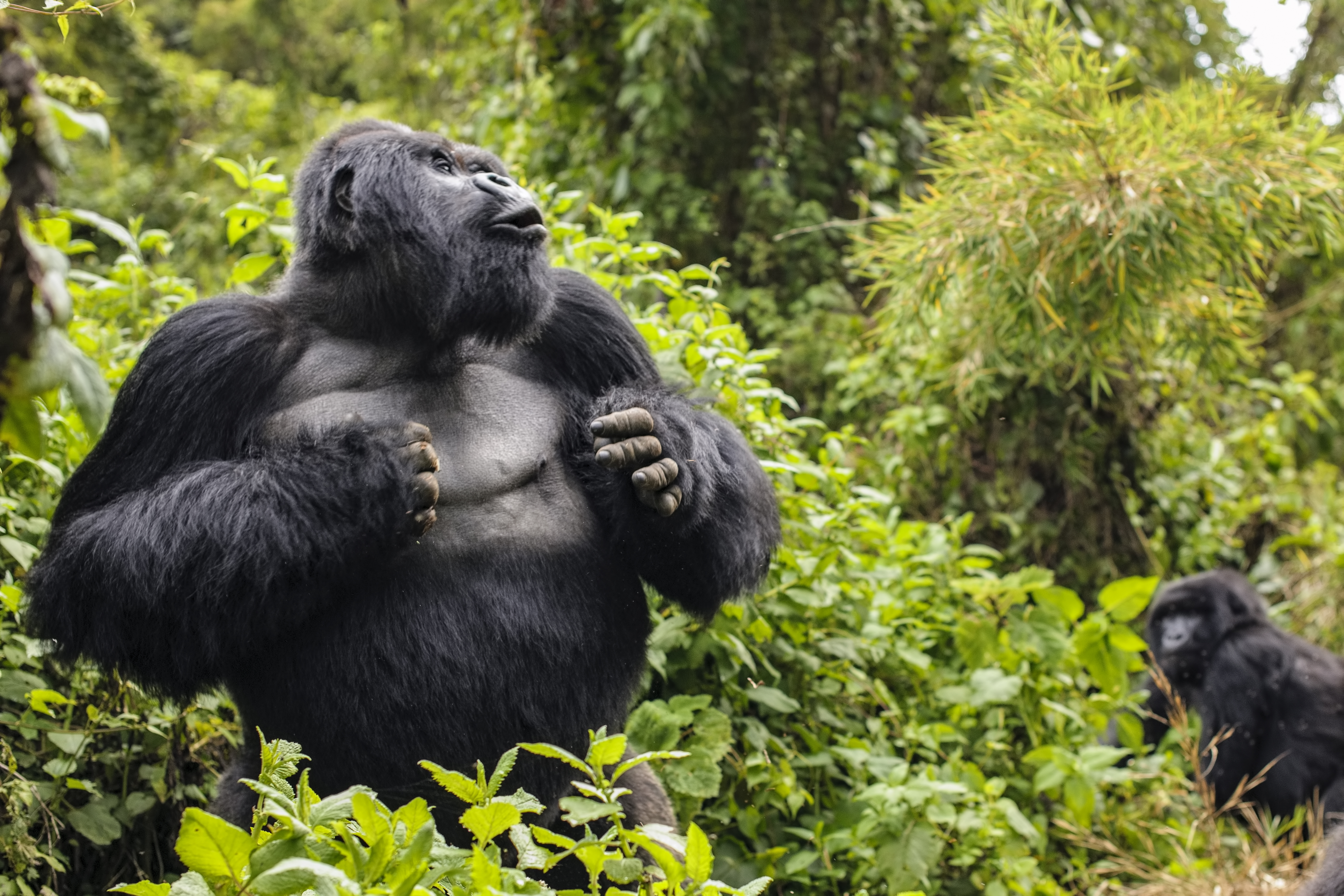
The Silverback Mountain Gorilla (Gorilla gorilla beringei) named Guhonda is found in the Volcanoes National Park, Rwanda, Africa. /VCG Photo
Let's look at the greener side of the country. Due to its mountain-dominated landscape, Rwanda is known as the "Land of a Thousand Hills." It is home to the world's last surviving mountain gorillas. Even though it is one of the smallest countries in Africa and has one of the highest population densities on the continent, nature beauty still holds its place in Rwanda and the grand national parks are its pieces of evidence.

Sabyinyo Mountain at the Volcanoes National Park is one of the volcanic mountains in the Virunga mountain range, Rwanda. /VCG Photo
You can track and see endangered mountain gorillas in the Volcanoes National Park while hiking in its bamboo forest; experience a safari in the Akagera National Park; or indulge yourself in Nyungwe National Park with one of the oldest rain-forests in Africa.
Here we introduce two beautiful plants of the "Land of a Thousand Hills."
Nymphaea Thermarum waterlily
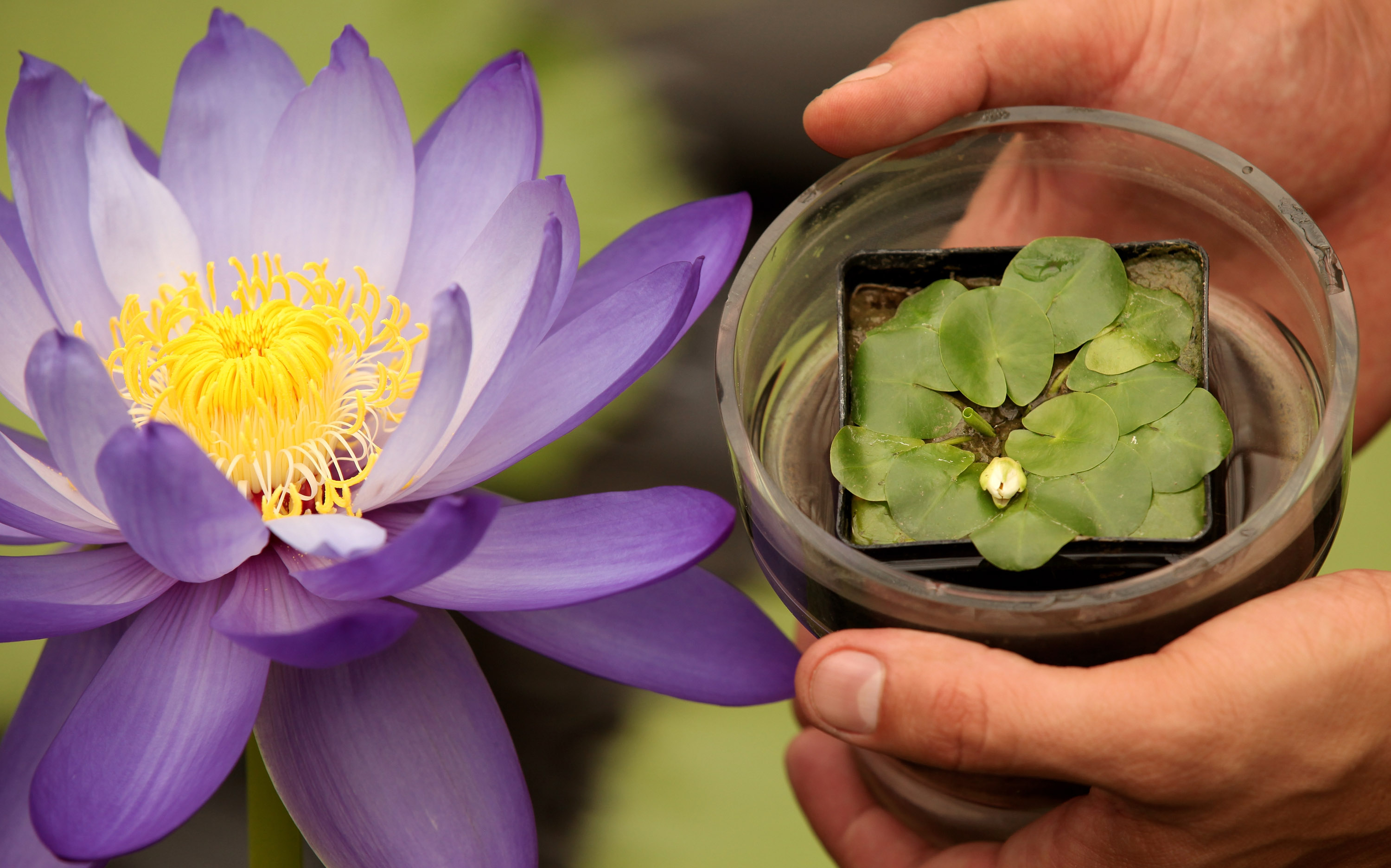
A Nymphaea thermarum waterlily, the smallest waterlily species in the world with pads as little as 1 centimeter in diameter, next to the flower of a Stowaway Blues waterlily, in the Royal Botanical Gardens at Kew in London, England, May 18, 2010. /VCG Photo
The Nymphaea thermarum waterlily is the smallest of its kind in the world with pads as little as 1 centimeter in diameter. It's tiny compared with the largest waterlily with pads as big as 3 meters.
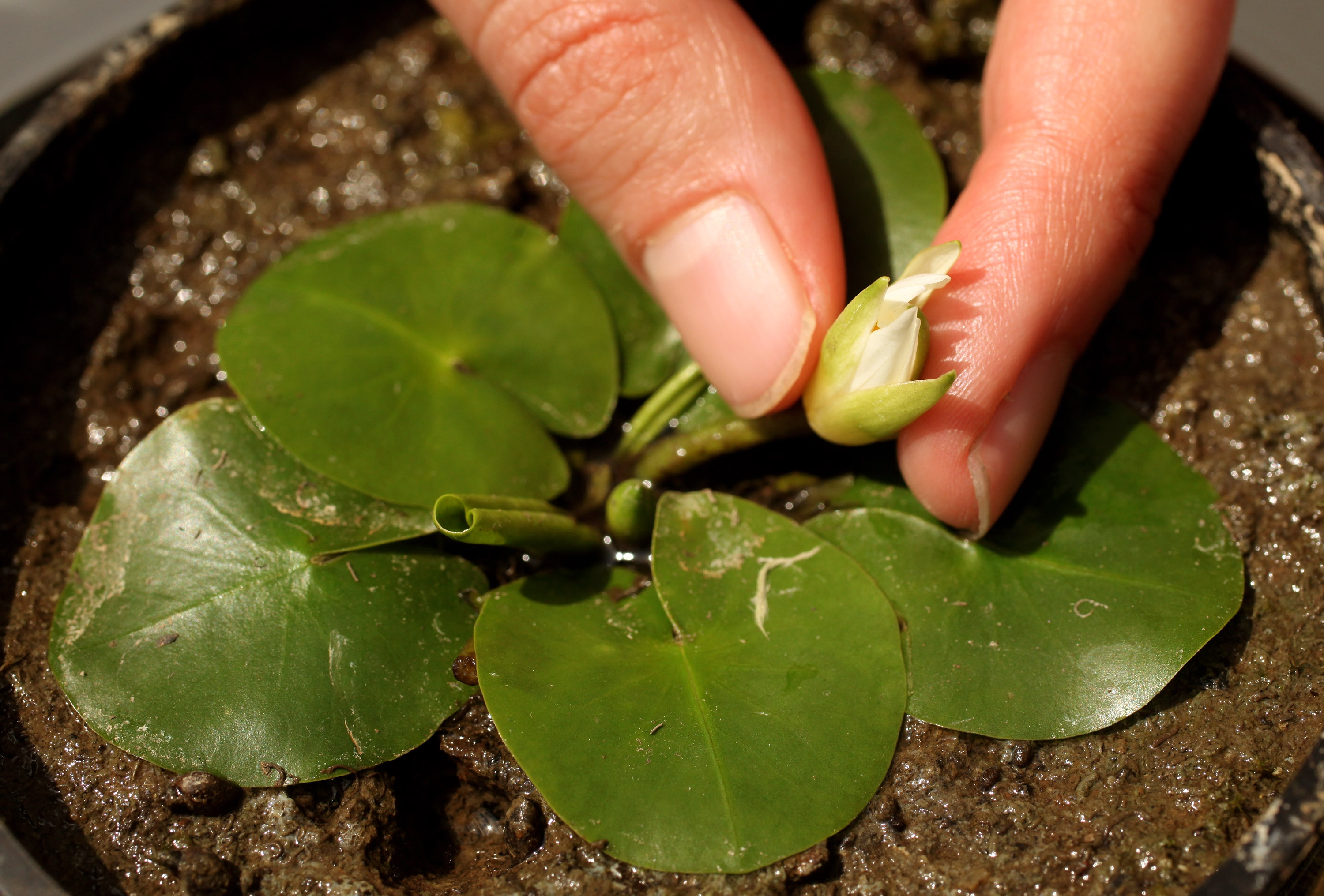
A Nymphaea thermarum waterlily, the smallest of its kind in the world. /VCG Photo
Nymphaea Thermarum, which doesn't really have a common name, grows in freshwater hot springs and was endemic to just one known location in Mashyuza, Rwanda. However, In 2008, it became extinct in the wild when local farmers started to use the spring for agriculture, which destroyed the lily's entire habitat. Luckily before the plants disappear for good from earth, some specimens were sent to Bonn Botanic Gardens, Germany. And in 2009, the waterlilies were saved and flowered for the first time in cultivation thanks to the efforts of Carlos Magdalena, a senior botanical tropical horticulturist at the Royal Botanical Gardens at Kew.
Coffee
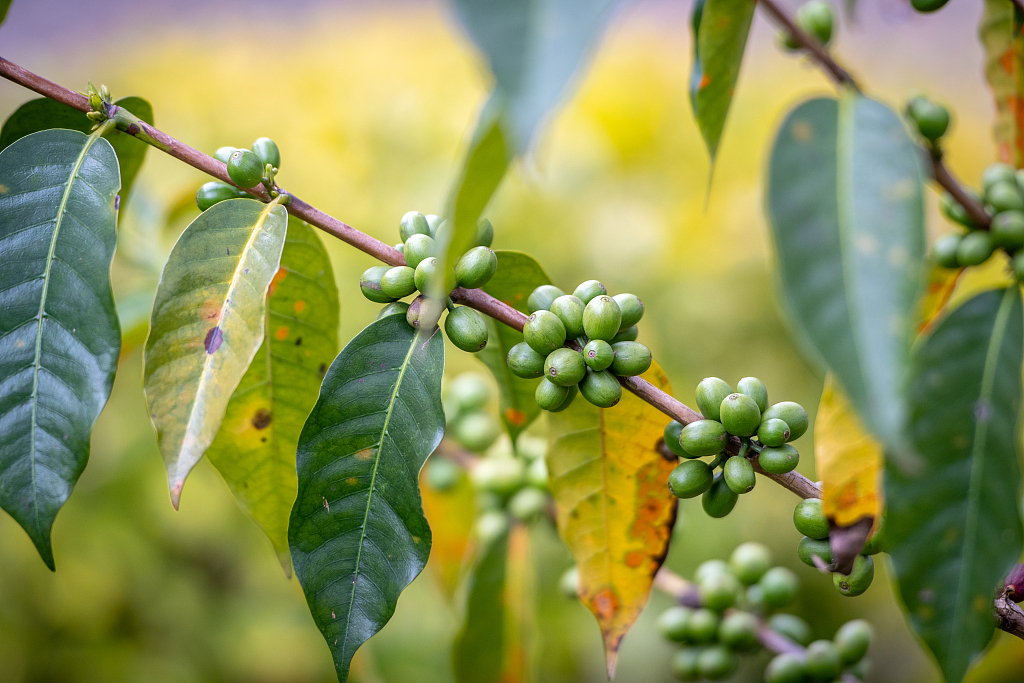
Coffea is a genus of flowering plants in the family Rubiaceae. /VCG Photo
Coffee has a long and complicated relationship with Rwanda. Although it's one of the country's largest and most profitable crops, about 99 percent of the production are exported. Under the Belgian colonizers a century ago, Rwandan farmers were forced to grow coffee while earning little from the production. The distaste for the drink combined with its high price makes coffee a lot less popular than other beverages such as tea in Rwanda today.
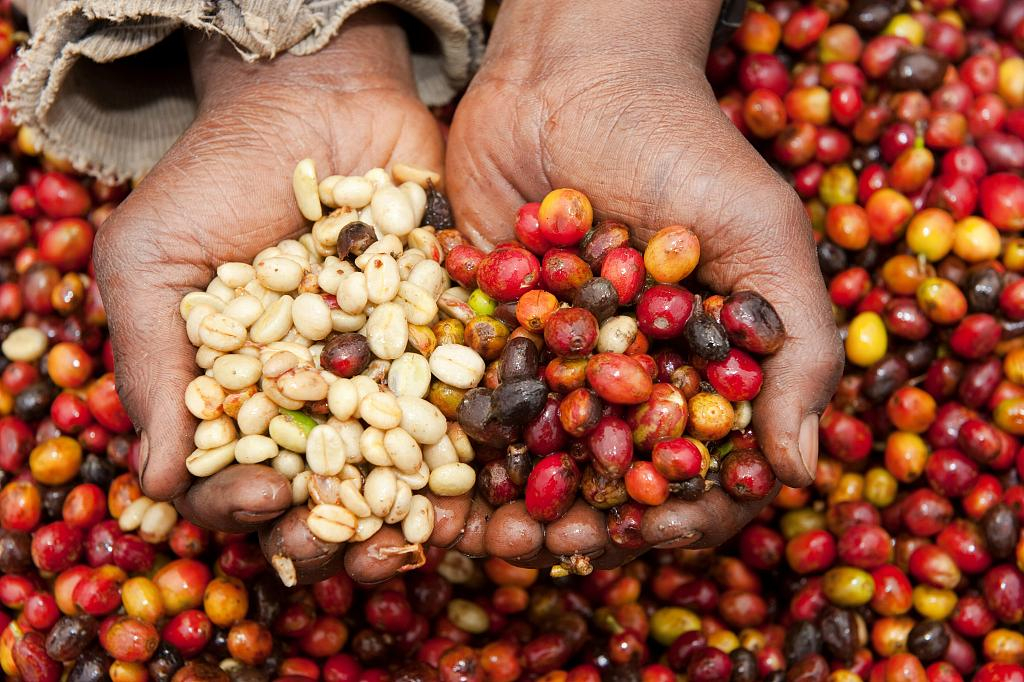
Coffee plays an important role in Rwanda's economy. /VCG Photo
But no matter what, coffee, the plant native to East Africa, plays a vital role in Rwanda's economy. According to the Rwanda Development Board, around 400,000 smallholder farm families depend on coffee production.
About 'Plants & Nations'
"Plants & Nations" is a series of articles and pictures about common plants in the world. It serves as a guide to beautiful plants from different countries.
For more articles, please click here:
(Top image via VCG)
(If you want to contribute and have specific expertise, please contact us at nature@cgtn.com.)

Copyright © 2018 CGTN. Beijing ICP prepared NO.16065310-3
Copyright © 2018 CGTN. Beijing ICP prepared NO.16065310-3